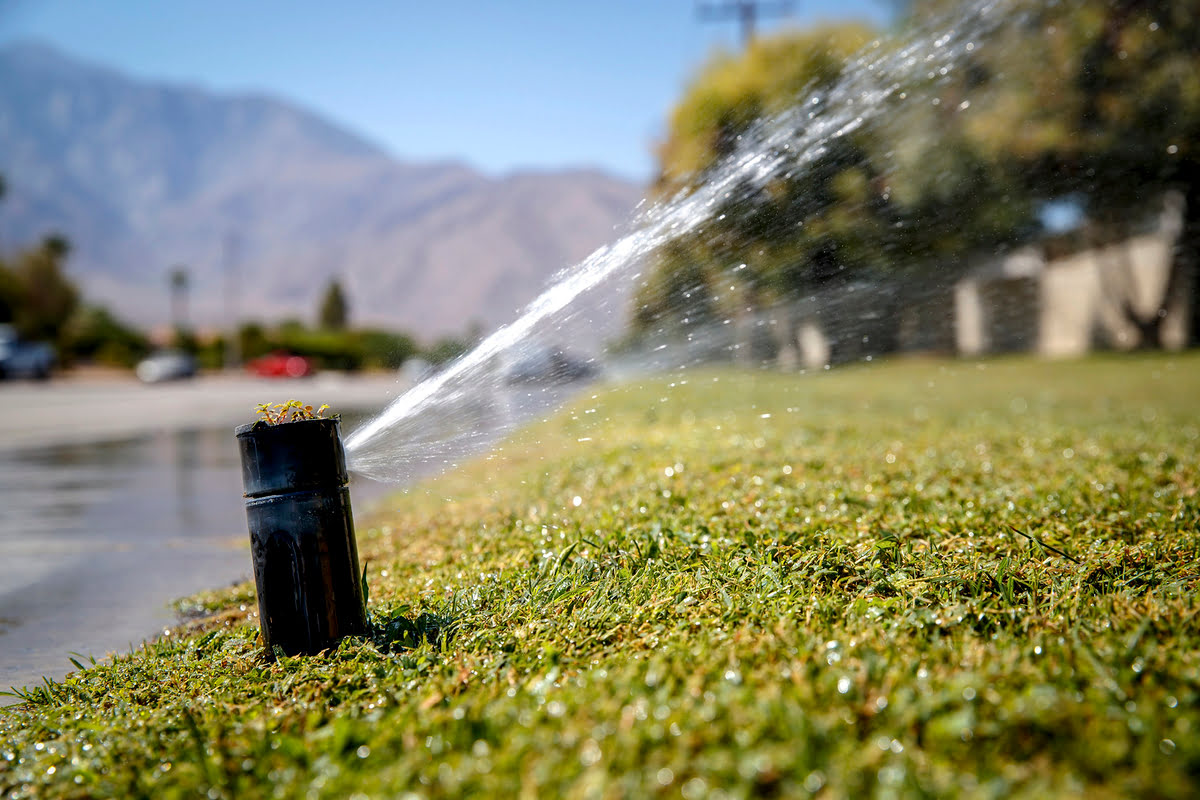Home>Gardening News and Trends>Latest News>What State Loses The Most Water From Its System Through Consumption And Irrigation?


Latest News
What State Loses The Most Water From Its System Through Consumption And Irrigation?
Modified: February 5, 2024
Discover the latest news on which state loses the most water from its system through consumption and irrigation. Stay informed on water management and conservation efforts.
(Many of the links in this article redirect to a specific reviewed product. Your purchase of these products through affiliate links helps to generate commission for Chicagolandgardening.com, at no extra cost. Learn more)
Table of Contents
- Introduction
- Overview of Water Consumption and Irrigation
- Factors Affecting Water Loss in a State’s System
- Methods Used to Calculate Water Loss
- Analysis of States with the Highest Water Loss
- Factors Contributing to Water Loss in Each State
- Impacts of Water Loss on the Environment and Communities
- Efforts to Reduce Water Loss
- Conclusion
Introduction
Water scarcity is a pressing issue facing many regions around the world, particularly when it comes to water consumption and irrigation. In some areas, water loss from the system is a significant concern, as it depletes valuable resources, harms ecosystems, and disrupts the livelihoods of communities that depend on water for various purposes. Understanding which states experience the highest water loss can help identify the factors contributing to this problem and guide efforts towards sustainable water management.
Water consumption refers to the amount of water used for domestic, industrial, and agricultural purposes, while irrigation specifically focuses on the water used for crop irrigation. Together, these two sectors contribute to a significant portion of water loss from a state’s system. Factors such as population growth, urbanization, agricultural practices, climate patterns, and infrastructure can greatly influence the amount of water lost within a state’s water system.
To calculate water loss, various methods are used, including monitoring water abstraction and usage, studying leakage rates in water supply systems, and evaluating evaporation rates from reservoirs. By analyzing these data, it is possible to determine which states have the highest water loss and explore the underlying factors contributing to this issue.
This article aims to delve into the states with the highest water loss, identifying the key factors that contribute to it, and discussing the impacts of water loss on the environment and communities. Additionally, it will highlight the ongoing efforts to reduce water loss through sustainable water management practices and innovative technologies.
Overview of Water Consumption and Irrigation
Water consumption and irrigation play crucial roles in sustaining various sectors of society, including agriculture, industry, and domestic needs. Water consumption refers to the use of water for different purposes, such as drinking, sanitation, and industrial processes. On the other hand, irrigation specifically focuses on the application of water to crops to support their growth and development.
Agriculture is the largest consumer of water globally, accounting for around 70% of total water withdrawals. In regions with arid or semi-arid climates, such as California in the United States, irrigation is vital to sustain agricultural production. In these areas, water is often diverted from rivers, lakes, or underground sources to irrigate fields and ensure sufficient water supply for crops.
Industrial water consumption encompasses several sectors, such as manufacturing, energy production, and mining. Industries require water for cooling processes, machinery operations, cleaning purposes, and the production of various goods. The amount of water used in industrial processes varies widely depending on the sector and the specific operations involved.
Domestic water consumption includes water used for drinking, bathing, cooking, and sanitation. Residential areas rely on water supply systems to deliver safe and clean water to households. While domestic water consumption may be relatively small compared to agricultural and industrial use, it still contributes to overall water demand and can vary considerably depending on factors such as population size and water usage patterns.
Water consumption and irrigation can have significant environmental impacts. Excessive water withdrawal from natural sources can lead to the depletion of aquifers, rivers, and lakes, affecting ecosystems and wildlife. Additionally, inefficient irrigation methods can result in water runoff, which may contain harmful chemicals and pollutants, negatively impacting downstream water bodies.
Inefficient water management and inadequate infrastructure can contribute to water loss within a state’s system. This water loss can occur through leakages in pipelines and distribution networks, evaporation from reservoirs, and inefficient irrigation practices. Identifying the states with the highest water loss can help prioritize efforts towards improving infrastructure, promoting water conservation, and implementing sustainable water management strategies.
In the following sections, we will explore the factors influencing water loss in a state’s system and the methods used to calculate it. We will also analyze the states with the highest water loss, examine the factors contributing to this issue, and discuss the impacts on the environment and communities. Furthermore, we will highlight the initiatives aimed at reducing water loss and promoting sustainable water management practices.
Factors Affecting Water Loss in a State’s System
Water loss in a state’s system can be influenced by a variety of factors, ranging from natural conditions to human activities. Understanding these factors is crucial for devising effective solutions to reduce water loss and promote sustainable water management practices.
1. Climate and Geography: The climate and geography of a region play a significant role in water loss. Arid and semi-arid regions, characterized by low rainfall and high evaporation rates, have higher water loss compared to regions with a more temperate climate. Similarly, the topography and proximity to water sources can impact the availability and distribution of water.
2. Population Growth and Urbanization: Rapid population growth and urbanization can strain water resources and infrastructure. As cities and urban areas expand, the demand for water increases, leading to greater water loss. Additionally, aging infrastructure in urban areas can contribute to leakages in water supply systems, further exacerbating water loss.
3. Agricultural Practices: Agriculture accounts for a significant portion of water consumption globally. Inefficient irrigation techniques, such as flood irrigation or outdated irrigation systems, can result in significant water loss. Promoting efficient irrigation methods, precision agriculture techniques, and conservation practices can help reduce water loss in the agricultural sector.
4. Industrial Water Usage: Industrial processes, including manufacturing, energy production, and mining, also contribute to water consumption and loss. Inefficient water management practices within industries, such as inadequate recycling or treatment of water, can lead to significant water waste.
5. Water Infrastructure: The infrastructure for water supply, including pipelines, distribution networks, and storage facilities, plays a crucial role in determining water loss. Aging infrastructure, inadequate maintenance, and leakage in pipelines can contribute to significant water loss within the system. Upgrading and maintaining water infrastructure can help reduce water loss and improve efficiency.
6. Policy and Governance: Effective water management policies, regulations, and governance frameworks are essential in reducing water loss. Implementing water conservation measures, incentivizing efficient water use, and enforcing regulations on water usage can play a key role in minimizing water loss and ensuring sustainable water management.
These factors interplay and vary across different states, resulting in varying levels of water loss within their systems. Identifying and understanding these factors is crucial for implementing targeted solutions and strategies to mitigate water loss and promote sustainable water management practices.
In the next section, we will explore the methods used to calculate water loss and analyze the states with the highest water loss in their systems.
Methods Used to Calculate Water Loss
Accurately assessing water loss in a state’s system requires the use of various methods that take into account multiple factors contributing to the depletion of water resources. These methods help provide valuable insights into the extent of water loss and identify areas for improvement in water management strategies.
1. Monitoring Water Usage: One common method is to monitor water usage at different points within the system. This involves tracking water abstraction from sources, such as rivers or groundwater, and measuring water consumption in various sectors, including agriculture, industry, and domestic use. By comparing the amount of water abstracted with the reported usage, it is possible to estimate water loss within the system.
2. Leakage Analysis: Leakage analysis focuses on identifying and quantifying water loss due to leaks in the distribution network. This involves conducting inspections, pressure testing, and using advanced technologies, such as acoustic sensors or remote sensing, to detect and locate leaks. By assessing the extent of leakage and repairing the infrastructure accordingly, water loss can be significantly reduced.
3. Evaporation Estimation: Evaporation from reservoirs and other water storage facilities can contribute to water loss. Estimating evaporation rates involves monitoring weather conditions, including temperature, humidity, wind speed, and solar radiation. Combining this data with the surface area of the water body allows for the calculation of evaporation losses, helping to gauge the overall water loss from the system.
4. Water Balance Analysis: Water balance analysis aims to calculate the overall water balance within a state’s system. This involves considering inputs, such as precipitation and inflow from rivers, and outputs, including water consumption, irrigation, and environmental flows. By comparing the total inputs with the total outputs, it is possible to estimate water loss or gain within the system.
5. Remote Sensing and GIS Technologies: Remote sensing and Geographic Information System (GIS) technologies have revolutionized the assessment of water loss. Satellite imagery can be used to monitor surface water bodies, track changes in land use, and identify areas experiencing water stress. GIS tools provide spatial analysis capabilities, enabling the visualization and analysis of water usage patterns and potential areas of water loss.
By employing these methods, water management authorities and researchers can gain a comprehensive understanding of water loss within a state’s system. This data is crucial for formulating effective strategies, targeting specific areas of concern, and implementing measures to reduce or mitigate water loss.
In the next section, we will analyze the states with the highest water loss and explore the factors contributing to this issue.
Analysis of States with the Highest Water Loss
Water loss within a state’s system can vary significantly across different regions, influenced by a combination of factors. Analyzing the states with the highest water loss provides valuable insights into the areas where water management strategies need to be strengthened to address this issue effectively.
One state that consistently experiences high water loss is California. Despite being an arid region with limited water resources, California’s agricultural sector is highly productive and heavily relies on irrigation. Inefficient irrigation methods, such as flood irrigation, coupled with the large-scale agricultural operations, contribute to significant water loss. Addressing these irrigation inefficiencies through the adoption of precision irrigation techniques and promoting water-efficient practices can help reduce water loss in California’s water system.
Texas is another state grappling with water loss challenges. High temperatures and arid conditions, coupled with a growing population and expanding urban areas, strain the state’s water resources. Aging infrastructure and leakages in the distribution network contribute to significant water loss. By investing in infrastructure upgrades and implementing effective leak detection and repair programs, Texas can mitigate water loss and improve water management practices.
Arizona, with its desert climate, faces similar water loss challenges. The state’s reliance on agricultural irrigation, particularly for crops like cotton, consumes a considerable amount of water. Improving irrigation efficiency, implementing water-saving technologies, and promoting crop diversification can help reduce water loss in Arizona’s water system.
Other states with high water loss include Nevada, New Mexico, and Colorado. Each state has its unique set of factors contributing to water loss, such as water-intensive industries, outdated infrastructure, and suboptimal irrigation practices. Addressing these factors requires a combination of policy interventions, infrastructure improvements, and initiatives focused on promoting water conservation and sustainability.
Efforts to reduce water loss in these states often involve collaboration between government agencies, water management authorities, researchers, and local communities. Implementing water-saving technologies, enforcing water conservation regulations, investing in infrastructure upgrades, and promoting public awareness about responsible water usage are crucial steps towards mitigating water loss.
By analyzing the states with the highest water loss, it becomes evident that a comprehensive approach, tailored to the specific challenges and characteristics of each region, is necessary. This includes implementing efficient irrigation techniques, upgrading infrastructure, monitoring water usage, and promoting behavioral changes to ensure sustainable water management and reduce water loss.
In the following section, we will explore the factors that contribute to water loss in each state, as well as the impacts on the environment and communities.
Factors Contributing to Water Loss in Each State
The factors contributing to water loss vary from state to state, influenced by the unique geographical, climatic, and socio-economic characteristics of each region. Understanding these factors is crucial in devising targeted strategies to reduce water loss and promote sustainable water management practices.
In California, water loss stems from a combination of factors. The state’s reliance on irrigation for agriculture, particularly in water-intensive crops like almonds and rice, leads to substantial water loss. Additionally, aging infrastructure and leakages in the water distribution network contribute to significant losses. Addressing these factors through improved irrigation practices, infrastructure upgrades, and leak detection programs is imperative to minimize water loss in California.
Texas faces water loss challenges due to its arid climate, population growth, and urbanization. The high water demand for domestic use, agriculture, and industries strains the state’s limited water resources. Aging infrastructure, inadequate maintenance, and leakages further exacerbate water loss. Implementing efficient irrigation techniques, upgrading infrastructure, and implementing water conservation measures can help mitigate water loss in Texas.
Arizona, with its desert climate, experiences water loss primarily attributed to irrigation practices in the agricultural sector. Water-intensive crops and traditional flood irrigation methods result in significant inefficiencies and loss. Encouraging the adoption of water-efficient irrigation techniques, promoting sustainable crop choices, and implementing effective water management policies can help reduce water loss in Arizona.
Nevada faces water loss challenges due to its growing population, limited water resources, and arid climate. The expansion of urban areas and increase in water demand put further strain on water supplies. Addressing water loss in Nevada requires a comprehensive approach, including infrastructure upgrades, leak detection programs, and promoting water conservation practices in both urban and agricultural settings.
New Mexico, characterized by a semi-arid climate, experiences water loss primarily due to excessive irrigation and outdated infrastructure. Inefficient irrigation practices, such as flood irrigation and overwatering, contribute to substantial water loss in the agricultural sector. Moreover, aging infrastructure and leakages further exacerbate the problem. Encouraging the adoption of water-efficient irrigation methods, implementing leak detection programs, and incentivizing water conservation practices are key steps towards reducing water loss in New Mexico.
In Colorado, water loss is influenced by multiple factors, including its diverse climate patterns, high altitude, and water-intensive agricultural practices. The state’s reliance on irrigation, particularly in the agricultural sector, contributes to significant water loss. Moreover, aging infrastructure, evaporation from reservoirs, and inefficient water management practices also play a role. Implementing sustainable irrigation techniques, improving infrastructure, and promoting water-saving measures are vital in mitigating water loss in Colorado.
While these factors contribute to water loss in each state, it is important to recognize that the specific challenges and solutions may vary within different regions of the state. Tailoring strategies to address local conditions and priorities is essential for sustainable water management and minimizing water loss.
In the following section, we will explore the impacts of water loss on the environment and communities, highlighting the importance of taking action to address this issue.
Impacts of Water Loss on the Environment and Communities
Water loss within a state’s system has far-reaching consequences that affect both the natural environment and the communities that rely on water resources for various purposes. Understanding these impacts is crucial in emphasizing the urgency of addressing water loss and implementing sustainable water management practices.
Environmental Impacts:
1. Ecosystem Disruption: Water loss can disrupt ecosystems by depleting water sources, such as rivers, lakes, and wetlands. This can lead to the loss of habitats for aquatic plants and animals and negatively impact biodiversity.
2. Water Scarcity: Excessive water loss contributes to water scarcity, where the demand for water exceeds the available supply. This can result in reduced water flows in rivers and streams, harm aquatic ecosystems, and increase the vulnerability of plant and animal species.
3. Soil Degradation: Inefficient irrigation practices can lead to soil degradation, as excess water can cause waterlogging and the leaching of essential nutrients. This can impact agricultural productivity and contribute to nutrient runoff, polluting surrounding water bodies.
4. Salinization: In regions that rely on irrigation, water loss can exacerbate soil salinization, where excessive salts accumulate in the soil. This reduces the fertility of agricultural land and can affect crop growth and productivity.
Community Impacts:
1. Water Shortages: Water loss contributes to water shortages, disrupting the availability of clean and safe water for communities. This can lead to water rationing, increased costs, and challenges in meeting basic daily needs for drinking, sanitation, and hygiene.
2. Economic Losses: Water loss can have significant economic implications for communities, particularly in states heavily dependent on agriculture. Reduced water availability and crop yields can lead to financial losses for farmers and related industries, affecting livelihoods and local economies.
3. Public Health Risks: Inadequate water supply due to water loss can increase public health risks. Limited access to clean water and sanitation facilities can lead to the spread of waterborne diseases and hygiene-related issues.
4. Social Disruptions: Water scarcity and related conflicts can disrupt societal harmony and exacerbate social inequalities. Disputes over water rights and access can lead to tensions within communities and between different user groups.
Addressing water loss is crucial for mitigating its impacts on the environment and communities. Implementing efficient irrigation practices, improving infrastructure, promoting water conservation measures, and raising awareness about responsible water usage are vital steps towards sustainable water management.
In the next section, we will explore the efforts and initiatives that aim to reduce water loss and promote sustainable water management practices.
Efforts to Reduce Water Loss
Recognizing the importance of mitigating water loss, various efforts and initiatives have been implemented to promote sustainable water management and reduce water loss within a state’s system. These efforts involve a combination of technology, policy, and community engagement, emphasizing the need for collective action to address this pressing issue.
1. Infrastructure Upgrades: Investing in infrastructure upgrades is crucial in reducing water loss. This includes replacing aging pipelines, improving water distribution networks, and implementing advanced technologies for leak detection and repair. By addressing infrastructure deficiencies, it is possible to significantly minimize water loss and enhance the efficiency of water supply systems.
2. Water Conservation Measures: Implementing water conservation measures is vital in reducing water loss and promoting responsible water usage. This includes promoting water-saving practices in households, industries, and agriculture, such as using water-efficient appliances, adopting precision irrigation techniques, and implementing water reuse and recycling projects.
3. Technology Adoption: Embracing innovative technologies can play a significant role in reducing water loss. Remote sensing and real-time monitoring systems allow for more effective water management, providing accurate data on water usage patterns, identifying areas of high consumption or leakage, and enabling timely interventions. Smart irrigation systems and sensor-based technologies help optimize irrigation practices and minimize water waste.
4. Policy Interventions: Enforcing regulations and policies that promote sustainable water management practices and reduce water loss is crucial. This includes implementing water pricing mechanisms that incentivize conservation, enforcing water efficiency standards in industries, and adopting water allocation plans that prioritize environmental flow requirements. Instituting water efficiency codes and regulations for building design and construction can also help in reducing water loss in the urban sector.
5. Public Awareness and Education: Raising public awareness about the importance of water conservation and the impacts of water loss is key to fostering behavior change. Engaging communities through educational programs, campaigns, and outreach initiatives can promote responsible water usage, encourage conservation efforts, and build a sense of responsibility towards sustainable water management.
6. Cross-Sectoral Collaboration: Addressing water loss requires collaboration and cooperation across different sectors and stakeholders. Governments, water management authorities, community organizations, and researchers need to work together to develop holistic and integrated approaches to water management. This includes sharing knowledge, data, and best practices, as well as fostering partnerships to implement effective water management strategies.
Efforts to reduce water loss are essential for preserving water resources, protecting ecosystems, and ensuring the availability of water for future generations. By implementing infrastructure upgrades, promoting water conservation measures, adopting innovative technologies, enacting supportive policies, and fostering community engagement, states can make significant strides towards minimizing water loss and achieving sustainable water management.
In the next section, we will conclude our discussion and highlight the importance of continued efforts in addressing water loss and ensuring a sustainable water future.
Conclusion
Water loss within a state’s system due to consumption and irrigation is a pressing issue with significant environmental, social, and economic implications. Understanding the factors contributing to water loss, analyzing the states with the highest water loss, and assessing the impacts on the environment and communities are crucial steps towards addressing this challenge.
Factors such as climate, population growth, agricultural practices, infrastructure, and governance influence the extent of water loss in each state. By recognizing these factors, targeted strategies can be developed to reduce water loss and promote sustainable water management practices.
Analyzing states with high water loss, including California, Texas, Arizona, Nevada, New Mexico, and Colorado, reveals the diverse range of challenges they face. Inefficient irrigation practices, aging infrastructure, population growth, and increased water demand contribute to significant water loss. Efforts to address water loss include infrastructure upgrades, water conservation measures, technology adoption, policy interventions, and community engagement.
The impacts of water loss extend beyond the depletion of water resources. It disrupts ecosystems, contributes to water scarcity, degrades soils, affects public health, and disrupts communities. By reducing water loss and improving water management, these impacts can be minimized, ensuring a sustainable and secure water future.
The efforts to reduce water loss require collaboration across sectors, including governments, water management authorities, industries, and communities. By working together, implementing innovative technologies, enforcing regulations, and promoting water conservation, significant progress can be made in reducing water loss and preserving water resources.
In conclusion, addressing water loss is a critical imperative to ensure the long-term sustainability of water resources and protect the environment and communities that depend on them. Continued efforts, policy support, and community involvement are necessary to achieve sustainable water management and secure a water-rich future for generations to come.






